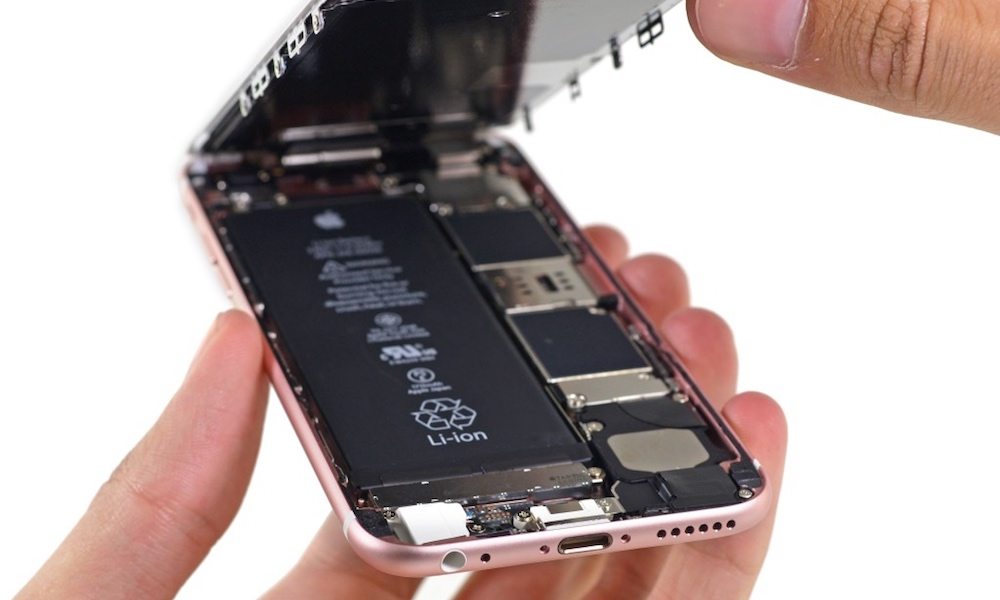How to Replace Your Battery and Speed up Your iPhone
 Credit: iFixit
Credit: iFixit
Toggle Dark Mode
Apple officially admitted to slowing down older iPhones this week — but not for the reason you might think.
While iOS does have a measure within it that throttles device performance when their batteries age, “Powerd” is meant to prevent your device from randomly shutting down or catching on fire. But whether or not you’re angry at this revelation, there’s another implication of the discovery: older device performance can be significantly boosted with a simple battery replacement.
If you’re experiencing random shutdowns or throttled performance, it might be time to replace your battery.
Unfortunately, it’s a bit hard to get a clear picture of your iPhone’s battery health within iOS. Apple will alert you of battery service needs in a small notice in Settings > Battery, but only near the end of the battery’s lifespan or if it identifies a significant issue. That’s likely well past the time when you start noticing throttled performance.
Third-party methods, like the free Battery Life app, can help you get a few more details about your iPhone’s battery health. Of course, the most accurate results will come from Apple itself, so it’s probably smart to just contact them to assess your iPhone’s battery. Even if they don’t find any major issues, you might still opt to replace your battery on account of significantly decreased performance.
As far as how to get your battery replace, there’s one option that’s recommended for replacing your battery, one that’s a bit more risky, and one that we suggest you don’t attempt at all.
Replacing Your Battery at Apple
Obviously, your safest bet when it comes to iPhone repairs is Apple. Sure, first-party repairs aren’t cheap, but they are the most reliable — and they can save you the most grief in the long run.
- If your iPhone is still under warranty, or if you purchased AppleCare+, the company might replace your battery for free. Of course, Apple will only replace batteries that it deems defective — basically if it doesn’t hold a charge (at least 80 percent of its original capacity).
- If your battery is simply degraded, but still operates within Apple’s battery guidelines, then a battery replacement won’t be free. Currently, the service fee for a battery replacement is $79.
You can bring your iPhone into a brick-and-mortar Apple Store location to get it repaired, which could be the quickest option. If you’re willing to go without your device for a few days, you can also send it in for repairs via the mail. Apple said it’ll get your iPhone back to you in 3 to 5 business days. In some cases, you could end up paying for the shipping costs.
On a similar note, Apple is currently offering free battery replacements for a number of iPhone 6s devices manufactured between September and October 2015, if they’re experiencing random phone shutdowns. To see if you qualify, check your device’s serial number here. Your phone will still need to be free of cracks and water damage to be eligible.
Third-Party and DIY Repairs
If time or budget are factors when you’re considering official Apple repairs, your other option could be a third-party repair shop.
- While many third-party shops are reputable and staffed by skilled technicians, the quality and price varies considerably between vendors.
- Similarly, there’s no guarantee that third-party shops will use waterproof adhesive when reassembling your device, meaning that your recent iPhone (iPhone 7 and newer) won’t be water-resistant anymore.
- Third-party repair shops are also unlikely to be using official Apple batteries, which automatically and permanently makes your iPhone ineligible for any repairs or service at Apple locations, according to Apple warranty guidelines leaked earlier this year.
- If a third-party shop is your only option, do your research and understand the consequences.
When it comes to DIY repairs, we can offer the following advice: don’t do it. Such repairs, while the cheapest, can irreparably damage your device — and you run the risk of damaging the battery, which can pose a safety risk. Even in the best case scenario, you’ll likely ruin your iPhone’s waterproofing measures.
Similarly, you immediately void your warranty if you try to conduct any DIY repairs. If that wasn’t enough, again, if your iPhone doesn’t have an official Apple battery in it, it’s automatically ineligible for any repairs. That means if you end up breaking your device in the process, you won’t be able to take it to Apple to get it fixed.






